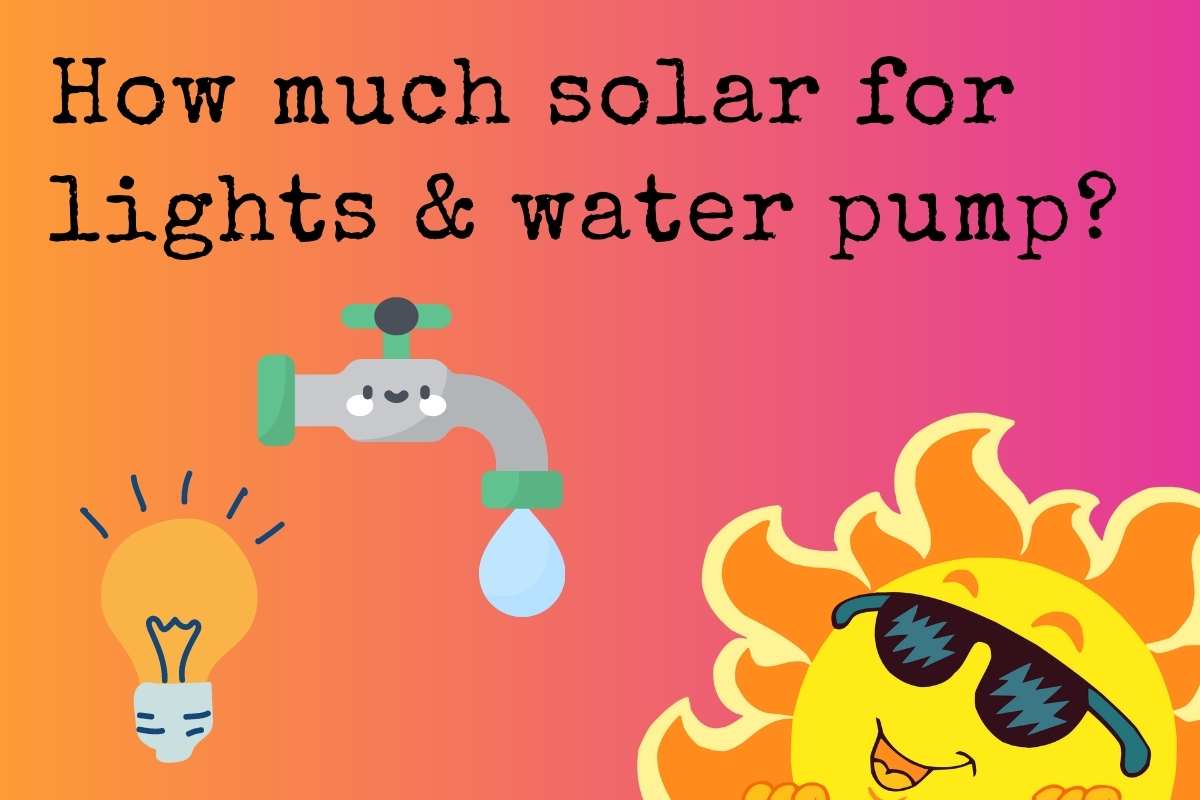How many panels do I need to run my lights and water pump?
##Customer Steve has asked: How many panels do I need to run my lights and water pump?
**Answer:**This is a question we get quite a bit when people are trying to determine the right amount of solar for their RV. Water pumps and lights are 2 of the main uses of power when off grid camping. Therefore these loads will operate at 12 volts off the battery which are charged by RV solar panels. This means these circuits will not use an inverter, thus they are more efficient.
A water pump when used when running will pull about 5 Amps at 12 volts or about 60 watts. The good news, is that the water pump usually only runs for a few minutes at most. Thus it is a relatively small load.
190-watt solar panels offer a balanced energy solution for RVers. Harnessing sunlight, they can efficiently power essential appliances like water pumps. With their moderate output, they ensure the pump operates smoothly, reducing reliance on traditional power sources. This size panel is a sustainable choice for those seeking off-grid water solutions in their RV adventures.
Lights can be a bit different. If you have LED lights in your RV, you will have a minimal draw from these as well. If you have any incandescent or fluorescent lights, I would immediately upgrade to LED before purchasing solar. Buying upgraded lights will save you a fortune on solar panels and batteries. In fact, 20 LED lights often pull less than 1 incandescent light. Make the upgrade.
To be more specific about your question, if your RV can physically hold a 190 watt panel which is 26.3″ X 59.06″ wide, then I would purchase the Go Power Overlander Kit. You can learn more about laying out your RV solar at http://outsidesupply.com/solar-panel-layout-guide-for-rvs/.
Understanding the power consumption of essential components like the water pump is crucial when considering off-grid RV living or simply aiming for self-sustainability. An average RV water pump typically consumes around 3-7 amps at 12 volts, translating to approximately 36-84 watts per hour. If one operates the pump for 2 hours daily, the total energy draw would be 72-168 watt-hours.
For solar energy, this means you’d need solar panels capable of producing this energy during sunlight hours, factoring in inefficiencies and potential shading. Additionally, the capacity of your battery bank should be adequate to store and deliver this energy, especially during cloudy days or nighttime use.
It’s also vital to factor in other concurrent energy demands and potential peaks in consumption. Ultimately, to effectively run a water pump in an RV using solar, you’d need a well-sized solar panel array and a compatible battery bank to ensure continuous, hassle-free operation.
RV solar controller protects your batteries
New Go Power RV Solar controller that offers Bluetooth connectivity for up to 2 battery banks. A charge controller will protect your batteries from overcharging. A large array produces a lot of power and can quickly damage a battery bank without the required RV solar controller.
Another consideration in this question is battery type. Certain batteries like lithium batteries are better are delivering power for longer periods. This can be helpful for calculating runtime on a water pump.
Here is a video that might help when you are trying to design your roof layout for solar panels. Enjoy!
